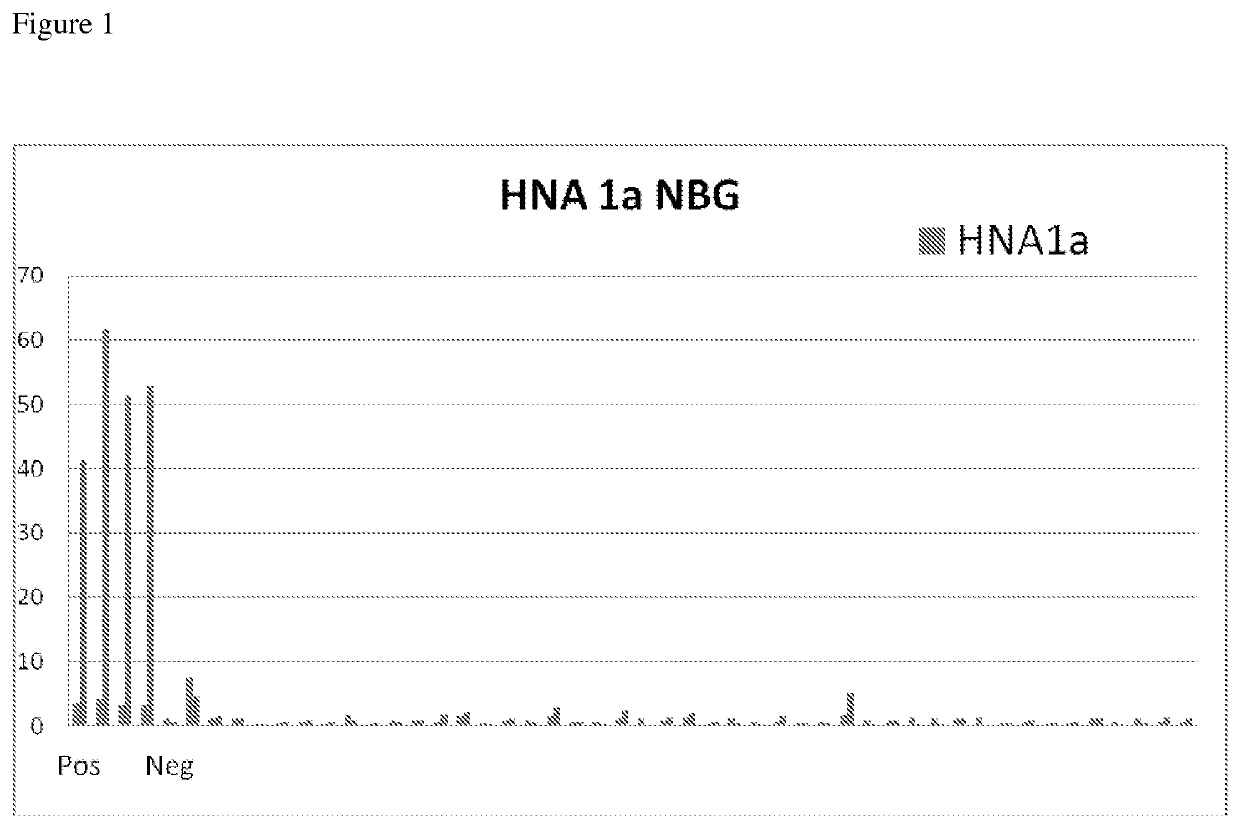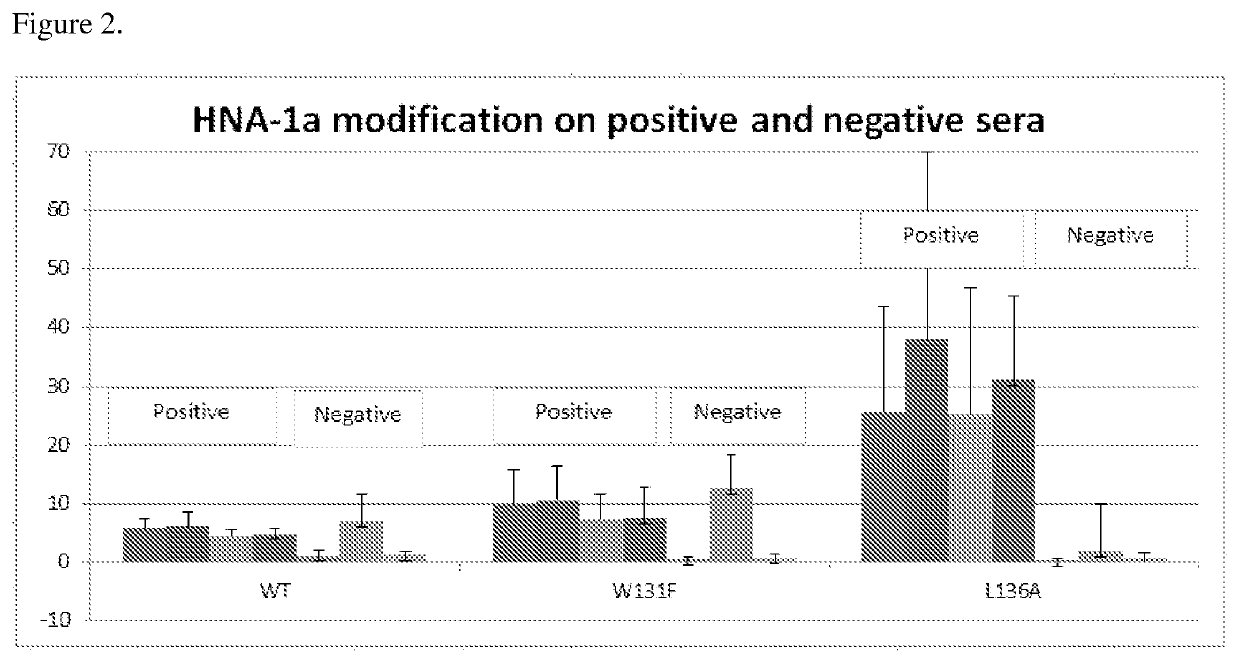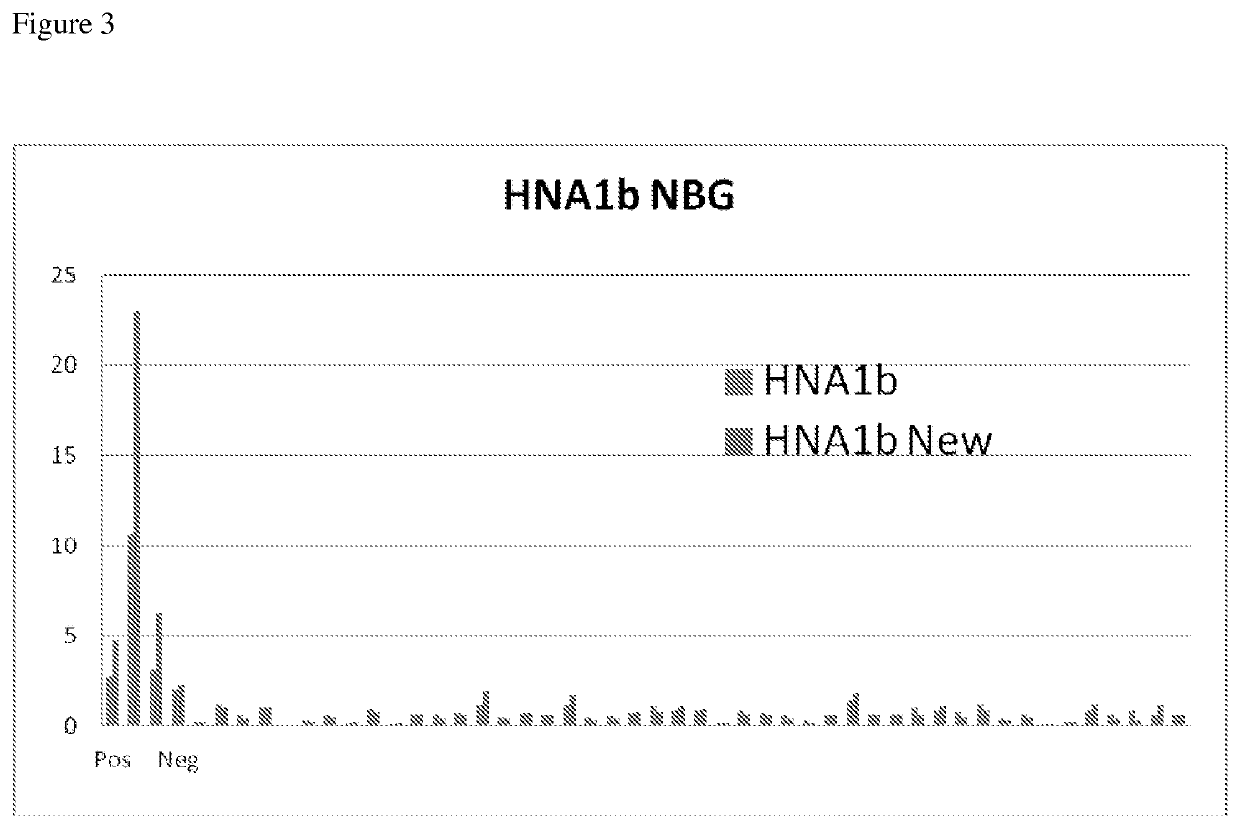Modified Fc gamma receptor type III (FCγIII, HNA-1) polypeptides and the uses thereof
a technology of gamma receptor and polypeptide, which is applied in the field of modified fc gamma receptor type iii (fciii, hna1) polypeptides, can solve the problems of inability to detect trali, so as to increase the specific reduce the non-specific reactivity of the polypeptid
- Summary
- Abstract
- Description
- Claims
- Application Information
AI Technical Summary
Benefits of technology
Problems solved by technology
Method used
Image
Examples
example 1
Increased Sensitivity for Anti-HNA-1a Specific Antibodies
The sensitivity of the modified HNA-1a proteins for anti-polymophic HNA-1a antibodies was tested. Wild type and modified HNA-1a proteins were coated on microbeads. The modified HNA-1a proteins had the L136A substitution (SEQ ID NO: 15), K138T substitution (SEQ ID NO. 19), and the W131F substitution (SEQ ID NO: 5). The negative sera (#LSNC) was as defined the human sera that does not have positive reaction against any HLA or HNA proteins and the HNA-1a positive sera was affirmed by neutrophil agglutination assay.
HNA-1a proteins were incubated with serum known to be positive for anti-HNA-1a antibodies and serum known to be negative for anti-HNA-1a antibodies for 30 minutes. Positive sera were diluted from 1:5 to 1:25 while negative sera was neat. The microbeads were subsequently washed with wash buffer comprising PBS with 0.1% polysorbate 20 (TWEEN) and incubated with goat anti-human IgG antibodies conjugated with phycocrythrin ...
example 2
Increased Sensitivity For Anti-HNA-1b Specific Antibodies
The sensitivity of the modified HNA-1b proteins for anti-polymophic specific HNA-1b antibodies was tested as described in Example 1. The modified HNA-1b proteins had the L136A substitution (SEQ ID NO: 15), K138T substitution (SEQ ID NO. 19), and the W131F substitution (SEQ ID NO:5). The reaction patterns were compared. Fold of increase against the negative sera was used to determine the sensitivity of the wild type HNA-1b v.s. modified HNA-1b. (Table 2; based on 11 tests).
Modification of HNA-1b polypeptides in their Fc binding domains, either in W131F, L136A, or K148T locations, decrease the non-specific background signal value from about 1900 of wild type to less than 300 MFI. For the wild type HNA-1b proteins, about 6 to 13 fold increase in reactivity with the positive sera was observed when compared to the reactivity of the wild type HNA-1 proteins to the negative sera. For the HNA-1b modified protein having the W131F subst...
example 3
Increased Sensitivity For Anti-HNA-1c Specific Antibodies
The sensitivity of the modified HNA-1c proteins for anti-polymophic specific HNA-1c antibodies was tested as described in Example 1. The modified HNA-1c proteins had the L136A substitution (SEQ ID NO: 15), K138T substitution (SEQ ID NO. 19), and W131F substitution (SEQ ID NO: 5). The reaction patterns were compared. Fold of increase against the negative sera was used to determine the sensitivity of the wild type HNA-1c v.s. modified HNA-1c. (Table 3; based on 9 tests).
Modification of HNA-1c polypeptides in their Fc binding domains either in W131F, L136A, or K148T locations decrease the non-specific background signal value from about 1500 of wild type to less than 210 MFI. For the wild type HNA-1c proteins, about 3 to 20 fold increase in reactivity with the positive sera was observed when compared to the reactivity of the wild type HNA-1c proteins to the negative sera. For the modified HNA-1c polypeptide having the W131F substi...
PUM
| Property | Measurement | Unit |
|---|---|---|
| aggregation | aaaaa | aaaaa |
| adhesion | aaaaa | aaaaa |
| affinity | aaaaa | aaaaa |
Abstract
Description
Claims
Application Information
 Login to View More
Login to View More - R&D
- Intellectual Property
- Life Sciences
- Materials
- Tech Scout
- Unparalleled Data Quality
- Higher Quality Content
- 60% Fewer Hallucinations
Browse by: Latest US Patents, China's latest patents, Technical Efficacy Thesaurus, Application Domain, Technology Topic, Popular Technical Reports.
© 2025 PatSnap. All rights reserved.Legal|Privacy policy|Modern Slavery Act Transparency Statement|Sitemap|About US| Contact US: help@patsnap.com



